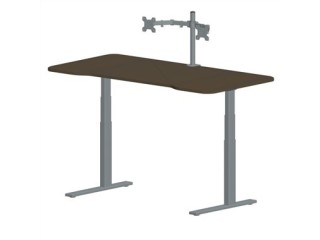How does a miniature circuit breaker actually work? Aziendale
2 years ago Industriale Bari 312 Visto Reference: 83Location: Bari
Prezzo: Contattaci
How does a miniature circuit breaker actually work?
Miniature circuit breakers (MCBs) ensure electrical safety in homes, offices, and other buildings as well as for industrial applications by protecting electrical installations against overloads and short circuits. Once a fault is detected, the miniature circuit breaker automatically switches off the electrical circuit to prevent damage to wires and to avoid the risk of fire. Warranting reliability and safety for people and assets, MCBs are equipped with two tripping mechanisms: the delayed thermal tripping mechanism for overload protection and the magnetic tripping mechanism for short circuit protection.
Just imagine you live in an apartment built maybe sometime in the 60s. You’ve just decided to get your annual spring clean over and done within record time tonight. In preparation, you’ve compiled your favorite MP3 playlist on your PC and it’s being streamed in all rooms. You’ve filled the dishwasher and turned it on, the washing machine is full of clothes and you’ve flicked the switch, you’ve pulled the vacuum cleaner out of its corner and plugged it in.
Not long after, you hear a quiet ‘CLICK’ from the corner (or, in the case of older apartments, from out in the hallway). The lights are out, the music is only playing in a couple of rooms or not at all, the washing machine and the dishwasher are off and the vacuum cleaner has fallen silent.
You’re annoyed, and you try to figure out what’s going on. Usually, ‘the cause’ can be located quite quickly: that ‘thing’ in the box on the wall is off. So, you switch it back on, and off you go. Moments later, the circuit breaker once again clicks to cut off the overload. In a pinch, you might even get the bright idea that you might be able to jam the switch in the ON position so that you can just finish vacuuming your apartment.
What happened?
Annoyingly, doing that won’t let you effectively clean your apartment nowadays. Our ABB miniature circuit breaker will, thankfully, protect your wires from both overloads and short-circuits even if the switch has been forced into the ON position, due to what we call a ‘trip-free’ MCB. Even if your finger keeps the switch in the on position, the internal mechanism will trip and ensure safe disconnection of the overloaded circuit.
What exactly does an MCB do?
The short answer: it protects wires from overloads and short-circuits. When we look on the inside of an MCB we can see how that actually works.
While electricity has become an indispensable component of our lives, the fact is, it comes with its own hazards to human life and property. Electrocution and fire being the two major risks associated with electricity, one cannot afford to be negligent when it comes to insulating equipment.
A Residual Current Circuit Breaker (RCCB) is an important safety measure when it comes to protection of electrical circuits. It is a current sensing device, which can automatically measure and disconnect the circuit whenever a fault occurs in the connected circuit or the current exceeds the rated sensitivity.
Principle behind RCCB
RCCB works on the principle of Kirchhoff’s law, which states that the incoming current must be equal to the outgoing current in a circuit. RCCB thus compares the difference in current values between live and neutral wires. Ideally, the current flowing to the circuit from the live wire should be the same as that flowing through the neutral wire. In case of a fault, the current from the neutral wire is reduced, the differential between the two known as Residual Current. On spotting a Residual Current, the RCCB is triggered to trip off the circuit.
A test circuit included with the Residual Current device ensures that the reliability of RCCB is tested. When the test button is pushed, the current starts to flow through the test circuit. As it creates an imbalance on the neutral coil of the device, the RCCB trips and supply is disconnected thereby checking RCCB’s reliability.
Benefits of RCCB
Provides protection against earth fault as well as any leakage current
Automatically disconnects the circuit when the rated sensitivity is exceeded
Offers possibility of dual termination both for cable and busbar connections
Offers protection against voltage fluctuation as it includes a filtering device that guards against transient voltage levels.
Moulded Case Circuit Breaker is an electromechanical device which protects a circuit from overcurrent and short circuit. It provides overcurrent and short circuit protection for circuits ranging from 63 Amps up to 3000 Amps.
The primary function of an MCCB is to provide a means to manually open a circuit and automatically open a circuit under overload or short circuit conditions. The overcurrent, in an electrical circuit, may result from short circuit, overload or faulty design.
It is generally installed on the secondary side of transformer stations (main switch or for protecting individual branches). In industry, we can use it in switchgear or for protecting the motors as well we have big requirements in shipbuilding. For building applications, you can find it as the main protection switch.
The Molded Case Circuit Breaker is a specific type of circuit breaker.
NEMA defines Molded Case Circuit Breaker as devices designed to open or close a circuit by nonautomatic means and to open the circuit automatically on a predetermined overcurrent without damage to itself when properly applied within its rating.
The term “molded case” simply refers to the construction of the circuit breaker and refers to the fact that the circuit breaker is an assembled unit in a supporting housing of insulating material.














